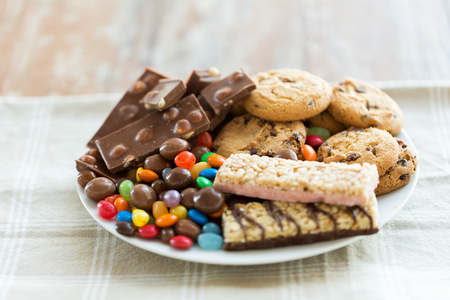Wondering how to control cravings? Here are 7 tips to deal with cravings during your weight-loss journey.
Most people who are on a weight loss diet find it difficult or do not know how to control food cravings. A nutritious diet should be your focus when you’re trying to reduce weight. Yet sometimes, it becomes difficult to curb cravings.
Have you ever found that despite your efforts to control your urge to eat, it just keeps getting stronger? First of all, don’t feel guilty about consuming something that might not count as healthy. We all give up from time to time.
It happens when those food cravings overpower us and we compromise on consuming essential nutrition and healthy weight. Whatever the cause, knowing how to control food cravings once they start, will help you stand strong against their tempting ways.
How to control cravings during weight loss
You can’t judge cravings. One minute your body may plead with you for a bowl of ice cream or a chocolate bar, and the next minute you may feel full. While not necessarily bad, cravings for something sweet, salty, or fatty foods that are deficient in vitamins, minerals, and other vital nutrients should never be given the green light.
To help you overcome those irresistible cravings and the urge to eat something unnecessarily, Health Shots spoke to Hari Lakshmi, Consultant, Dietitian, and Nutritionist, at Maternity Hospital, Alwarpet, Chennai.
Lakshmi says, “When it comes to weight loss, food cravings can be a significant hurdle to overcome. Whether you’re trying to lose weight, maintain a healthy lifestyle or just trying to cut down on unhealthy snacking, controlling food cravings is a crucial factor in achieving your goals.” So, here are 7 tips to control food cravings while on a weight loss plan:
1. Keep yourself hydrated
Drinking water or any other non-sugar-based beverage can help you reduce your cravings for sugary or salty snacks. Often, dehydration can lead to feelings of hunger that are mistaken for food cravings. So, ensure that you’re drinking enough water and staying hydrated throughout the day.
2. Avoid processed and packaged foods
Processed and packaged foods tend to have higher amounts of sugar, salt, and unhealthy fats that can trigger food cravings. Try to opt for whole foods like fruits, vegetables, nuts, and seeds instead.
3. Get enough sleep
Not getting enough sleep can increase hunger and cravings for unhealthy snacks. Aim for 7-8 hours of sleep each night to regulate your hormones and keep your cravings in check.
4. Eat enough protein
Protein is a macronutrient that can help you feel full and satisfied, making it easier to control your food cravings. Make sure to incorporate protein into every meal, such as eggs, tofu, chicken, or fish.
5. Practice mindful eating
Mindful eating is the practice of being present and fully engaged while eating. It helps you to listen to your body’s signals and eat when you’re hungry and stop when you’re full. This can help you to control your cravings and avoid overeating.
6. Plan your meals and snacks
Planning your meals and snacks can help you to stay on track and avoid impulsive eating. Make sure to include a balance of carbohydrates, protein, and healthy fats in your meals and snacks to keep your cravings in check.
7. Manage stress
Stress can trigger food cravings, leading to overeating or unhealthy snacking. Try to manage your stress levels by practicing yoga, meditation, or deep breathing exercises.
Takeaway
Controlling food cravings while following a weight loss plan can be challenging, but it is possible with the correct attitude and resources. To stay on track and reach your weight loss goals, practice mindful eating, plan your meals and snacks, drink plenty of water, stay away from processed foods, get enough sleep, consume adequate protein, and manage your stress. Keep in mind to treat yourself with kindness and to appreciate the journey to a healthy you.
Click here to read more about how to control cravings.






